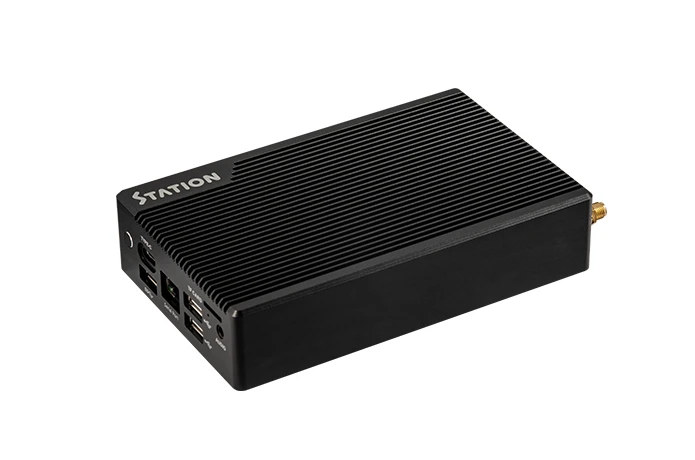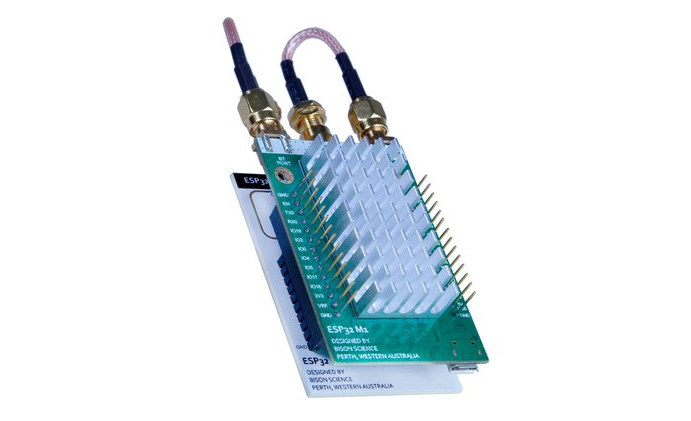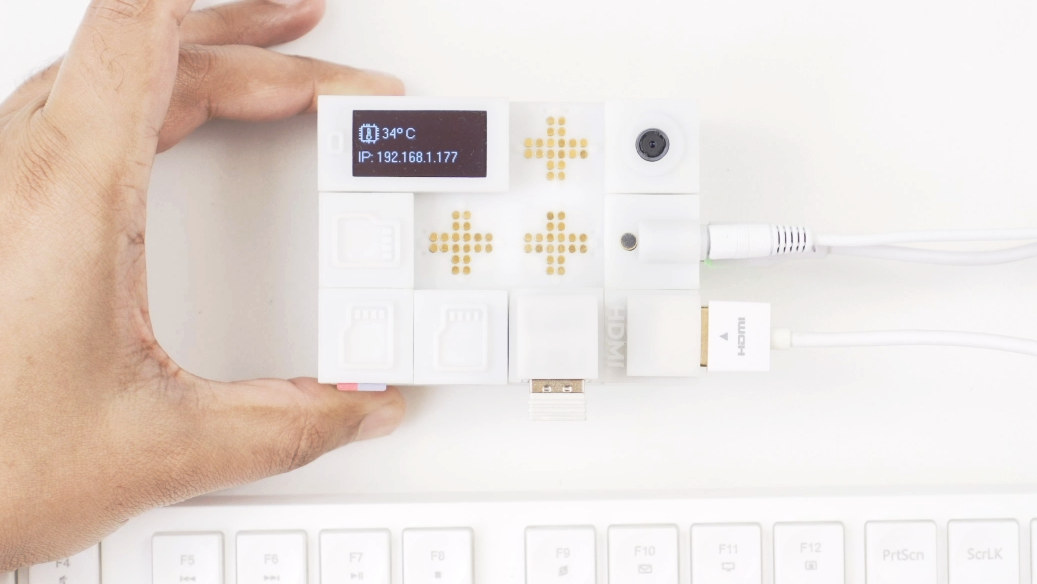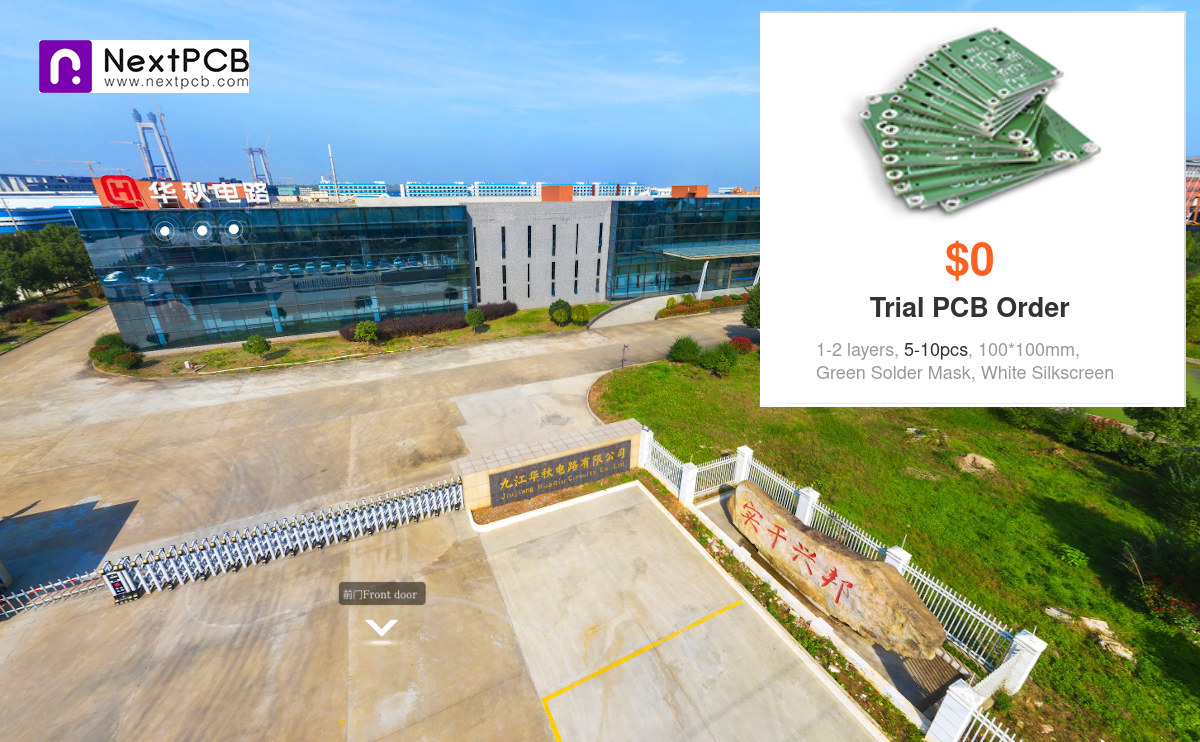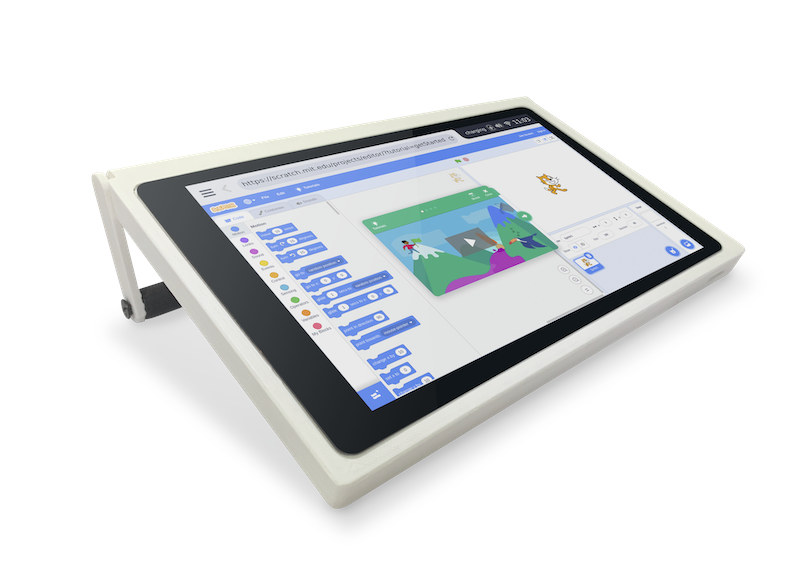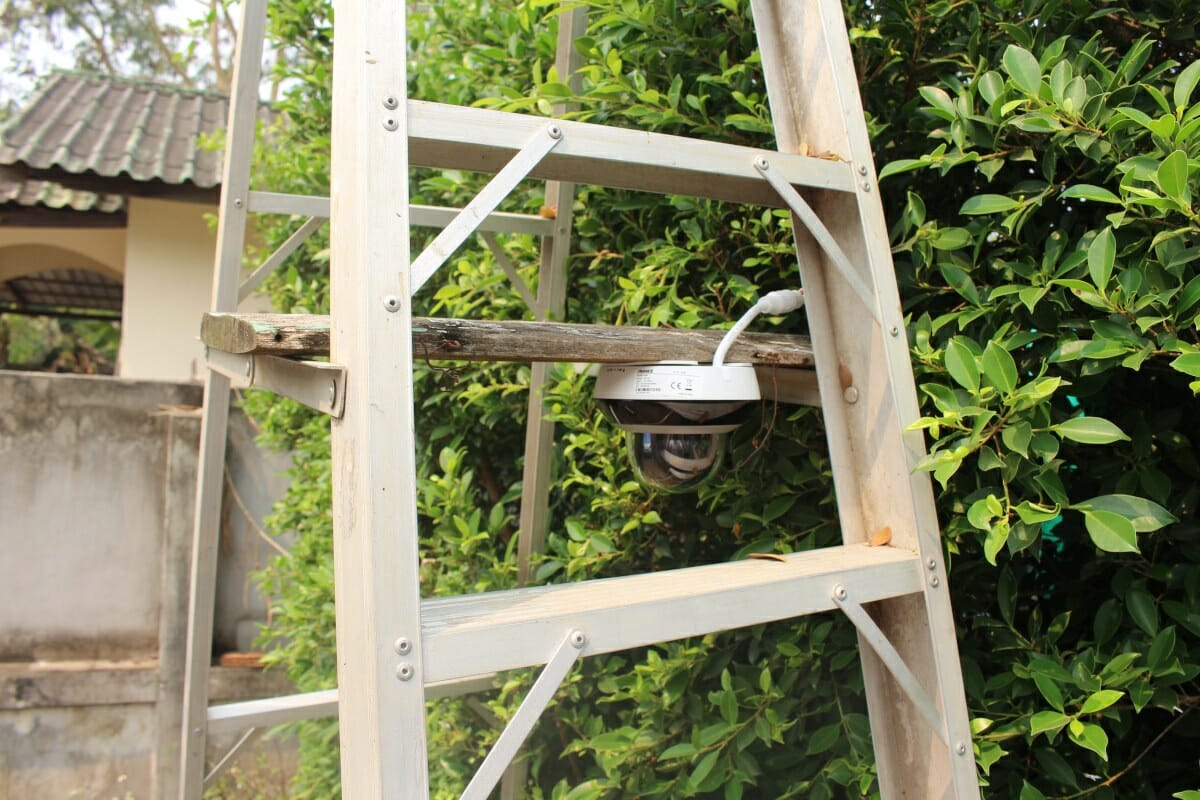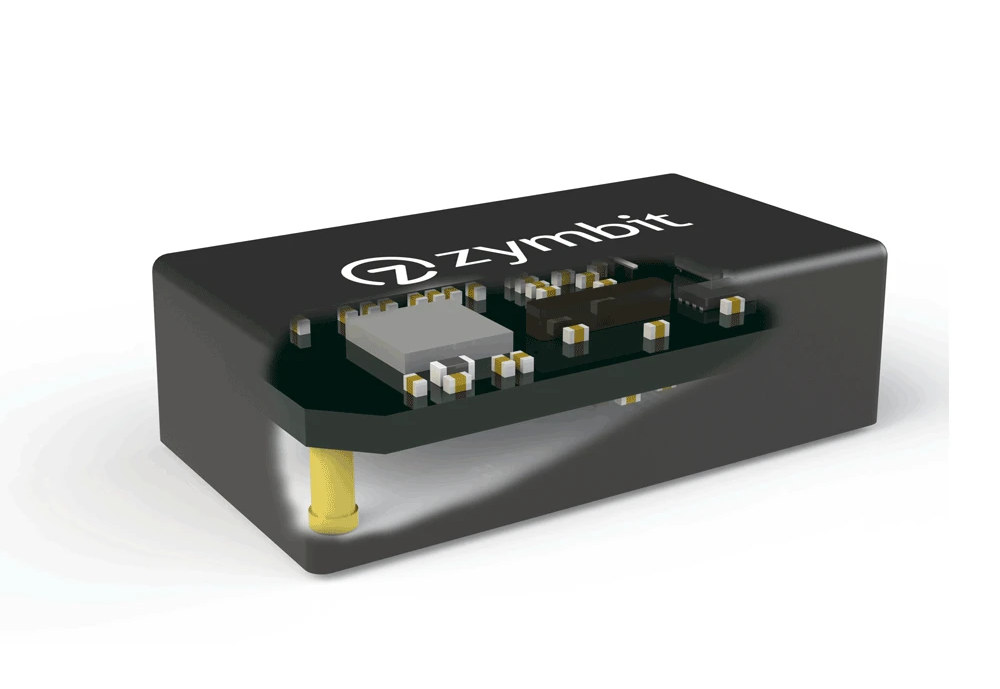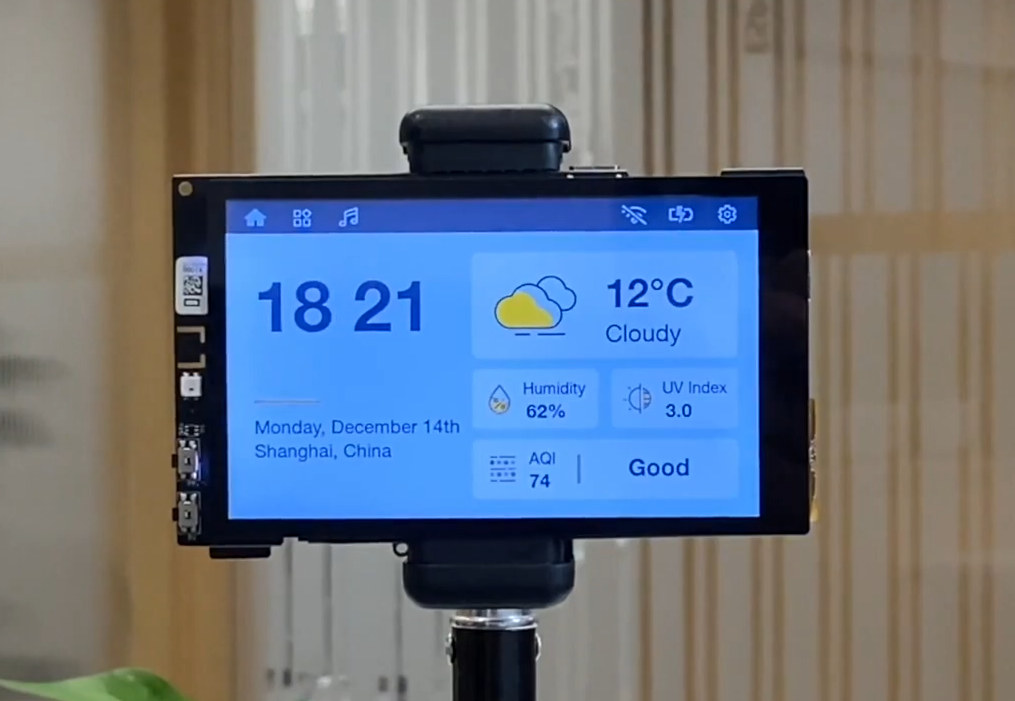Last week, we noted Firefly launched the first RK3568 system-on-module with Core-3568J AI Core and a corresponding full-featured development kit. But the company has been working on another interesting Rockchip RK3568 based device with Station P2 mini PC. Most Arm mini PCs need to make compromises when it comes to interfaces having to rely on USB bridges, but Station P2 feels very much like standard x86 based mini PC, albeit with a slower processor, thanks to native interfaces, or implemented through PCIe, with M.2 and SATA 3.0 SSD/HDD, dual Gigabit Ethernet, as well as WiFi 6, several USB 3.0/2.0 ports, and support for up to 8GB RAM among other features. Station P2 mini PC specifications: SoC – Rockchip RK3568 quad-core Cortex-A55 processor @ up to 2.0 GHz with Arm Mali-G52 2EE GPU with support for OpenGL ES 1.1/2.0/3.2, OpenCL 2.0, Vulkan 1.1, 0.8 TOPS NPU for AI acceleration, 4Kp60 H.265/H.264/VP9 […]
Long range ESP32 Wi-Fi development board promises up to 1.2km range (Crowdfunding)
WiFi is not really designed for kilometer range transmission, but CNLohr previously demonstrated 1km range with ESP8266, and some directional antennas are sold to expand the WiFi range. Bison Science’s ESP32-M1 Reach Out WiFi development board has been specifically designed for long-range connectivity with up to 30 dBm (1W) transmit power and support for various types of antennas for a 1.2-kilometer range, even tested up to 1.5km in a clear day. ESP32-M1 Reach Out features and specifications: WiSoC – Espressif Systems ESP32-D0WDQ6 dual-core processor @ 240 MHz Storage – 32 Mbit flash Connectivity 2.4 GHz Wi-Fi 4 802.11 b/g/n Bluetooth 4.2/5.x Classic and Bluetooth Low Energy (BLE) QPF4219 PA (Power Amplifier) and LNA (Low Noise Amplifier) Wi-Fi RF front end (RFFE) from Qorvo with 33 dB PA gain and 15 dB LNA gain Wi-Fi transmit output power adjustable from 21 to 30 dBm (1 W) conducted Wi-Fi front end bypass […]
Pockit modular Linux computer takes hot plugging magnetic blocks
There have been attempts to create modular computers and smartphones to reduce electronics waste and improve user-serviceability over the years with initiatives and products like Google Project Ara, PinePhone and Fairphone3 smartphones, DevTerm mini computer, Olimex TERES-I laptop, and many more. Here’s another modular computer project that looks really cool. Pickit modular computer is comprised of an STM32+ESP32 based mainboard with a socket for an optional Raspberry Pi Compute Module 3. The board includes magnets and electrical contacts to snap and hot-plug modules/blocks while the computer is running. The video demo embedded further below, is really impressive, but let’s check out Pockit preliminary specifications first: MCU – STMicro STM32 microcontroller Wireless MCU – ESP32 dual-core processor with WiFi and Bluetooth LE CPU module – Socket for Raspberry Pi Compute Module 3 Expansion 24+ feature BLOCKS ready to use with instant connection using magnetic-snaps including Ethernet, Display (HDMI), audio, sensor modules […]
NextPCB offers free PCB prototypes for first order (sponsored)
Shenzhen Huaqiu Electronics Co., Ltd, better known as NextPCB, is a PCB manufacturer with multiple factories in China that has been in business for over 15 years. The headquarter of the company is however located in Paris, France, under a company called NOVA SILK ROAD SARL, but most operations are managed in China from the branch office in Shenzhen, and the company operates three plants all certified by IATF16949, ISO9001, ISO14001, UL, CQC, RoHS and REACH: A PCB prototype factory in Bao‘an District, Shenzhen, Guangdong A PCB mass manufacturing factory in Xigang District, Jiujiang Economic Development Zone, Jiujiang City, Jiangxi Province A PCB assembly plant in Dongguan City, Guangdong Province, China. The prototype factory always for fast turnaround for prototype, while the mass manufacturing factory targets higher volume production with further lower costs. Beyond just making PCBs, the assembly plant works on soldering BGA, Micro-BGA, QFN, and other components to […]
CutiePi tablet gets a Raspberry Pi CM4 upgrade
CutiePi tablet was launched on Kickstarter last year with a Raspberry Pi Compute Module 3+ Lite, an open-source hardware carrier board, and an 8-inch multi-touch display with 1280×800 resolution. Shipping to backers is about to start, but the company has already started working on a new version of the CutiePi Tablet with the Raspberry Pi CM4 module released last October. This will enable greater performance and more memory with the tablet shipping with a 2GB RAM CM4 module by default. CutiePi CM4 tablet preliminary specifications: SoM – Raspberry Pi Compute Module 4 Lite with Broadcom BCM2711 quad-core Cortex-A72 processor @ 1.5 GHz, 2GB RAM Storage – MicroSD card slot Display – 8-inch 5-point multi-touch IPS LCD with 1280×800 resolution Video Output – Micro HDMI Audio – 2W 8Ohm speaker, audio amplifier, built-in microphone Camera – 5MP front-facing camera (OV5647) Connectivity – Dual-band 802.11 b/g/n/ac WiFi 5 and Bluetooth 5.0 USB […]
Annke CZ400 AI security camera reviewed with basic and smart events
At the beginning of this month, I started the review of Annke CZ400 AI security camera by listing specifications, unboxing the device, and doing a partial teardown, notably to install a MicroSD card. In theory, the camera comes with more advanced AI features than Reolink RLC-810A 4K CCTV camera that only supports people and vehicle detection, as the Annke security camera can handle face detection, line crossing, unattended baggage detection, and other smart event detections. So let’s see how it performs Annke CZ400 installation The first challenge was the installation, as I told the company I would not be willing to install the camera on the ceiling since I’m renting, and preferred wall-mounting. after checking the user manual that included a wall mount, I decided to go ahead, and get the review unit. But sadly, the wall mount is not included in the package, and Annke even told me they […]
Zymbit HSM4 & HSM6 security modules work with embedded Linux hardware, Raspberry Pi, Jetson Nano
Zymbit Zymkey security modules, now called Zymkey4i, were first introduced several years ago. Based on the Microchip ATECC508A CryptoAuthentication chip, the modules were available as a USB stick, an I2C module for Raspberry Pi boards, or an SMT component, and designed to enable multifactor device ID & authentication, data encryption & signing, key storage & generation, and physical tamper detection. The company has now informed CNX Software they had launched HSM4 cryptographic protection module and HSM6 hardware wallet with a different form factor for easy integration into embedded applications, and devkits compatible with Jetson Nano and Raspberry Pi SBCs. Zymbit HSM4 cryptographic protection module & devkit HSM4 crypto module key features and specifications: HSM4 is built upon Zymkey4i module, and integrates an Arm Cortex-M0 microcontroller, as well as a secure element likely to be Microchip ATECC508A, or the more recent ATECC608B CryptoAuthentication chip if the company upgrade System Identity & […]
ESP32-S2-HMI-DevKit-1 development kit ships with 4.3-inch touch display, 1,950mA battery
Espressif Systems ESP32-S2 single-core WiFi processor features an RGB LCD interface that makes it suitable for multimedia applications, and about two years ago, ESP32-S2-Kaluga-1 Multimedia Development Board was introduced with a touchscreen display & a camera. But now the company has launched another ESP32-S2 based development kit specifically designed for HMI (human-machine interfaces) found in smart home automation controllers, smart speakers with display, smart alarm clocks, and so on. Meet ESP32-S2-HMI-DevKit-1 equipped with a 4.3-inch color LCD display and a touch panel. ESP32-S2-HMI-DevKit-1 specifications: Wireless module – ESP32-S2-WROVER module with ESP32-S2 Xtensa single-core 32-bit LX7 microprocessor, up to 240 MHz with 128 KB ROM, 320 KB SRAM, WiFi 4 connectivity, 4MB flash, 2MB PSRAM Storage – Micro SD card slot Display – 4.3-inch display with 800×480 resolution, I2C capacitive touch panel Audio – Audio amplifier, built-in microphone, speaker connector USB – 1x USB-C OTG (DFU/CDC) port, 1x USB-C debug port […]


